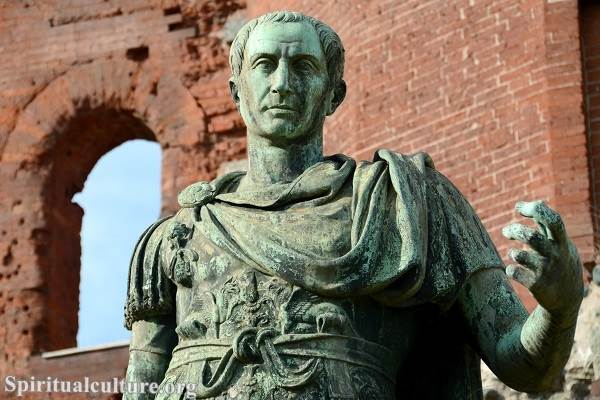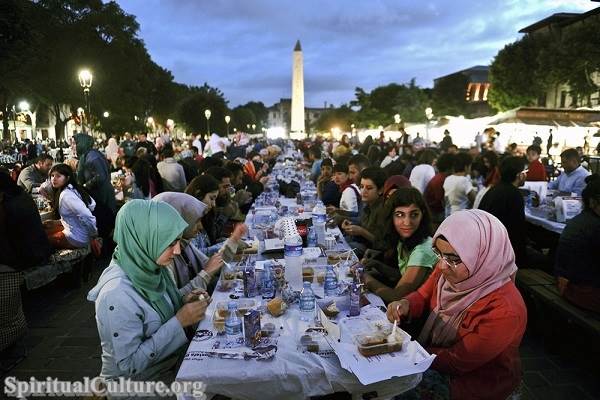The transformation of Rome from a polytheistic society to a predominantly Christian civilization represents one of the most significant shifts in Western history. The process by which Christianity, initially a small and often persecuted sect, became the dominant religion of the Roman Empire was gradual and complex, involving a series of events, policies, and cultural changes that unfolded over several centuries.
In this article, Spiritual Culture delves into the key stages of Rome’s Christianization, from the emergence of early Christian communities to the establishment of Christianity as the empire’s official religion, and explores the profound social, cultural, and political consequences that followed.
Early Christian Communities in Rome
Origins of Christianity in the Roman Empire
Christianity began in the first century CE as a small Jewish sect in the Roman province of Judea. Its founder, Jesus of Nazareth, preached a message of love, forgiveness, and the coming of the Kingdom of God. After his crucifixion, his followers, known as Apostles, spread his teachings throughout the Roman world. The rise of Christianity was facilitated by the vast infrastructure of the Roman Empire, which included an extensive network of roads and a common language (Greek and later Latin) that allowed ideas to travel quickly across regions. The Pax Romana, a period of relative peace and stability across the empire, further enabled the spread of Christianity by allowing missionaries to travel more safely.
Rome, as the heart of the empire, became a focal point for the new faith early on. By the mid-first century CE, a Christian community was established in the city, as evidenced by the Apostle Paul’s letter to the Romans, written around 57 CE. The cosmopolitan nature of Rome, with its diverse population and bustling trade routes, made it an ideal environment for the dissemination of new religious ideas. Christianity initially spread among the lower classes, including slaves and freedmen, who were attracted to its message of hope and salvation. However, it gradually gained followers among the more educated and affluent as well.
Role of the Apostles and Early Missionaries
The Apostles, particularly Peter and Paul, played a crucial role in establishing Christianity in Rome. According to Christian tradition, Peter, who is often regarded as the first bishop of Rome, arrived in the city around 42 CE. He is believed to have led the early Christian community there until his martyrdom under Emperor Nero in 64 CE. Peter’s association with Rome later became the foundation for the papacy, with subsequent bishops of Rome claiming spiritual descent from him.
Paul, another pivotal figure, was instrumental in spreading Christianity beyond its Jewish roots to Gentiles (non-Jews). His missionary journeys took him across the eastern Mediterranean, where he established Christian communities and wrote letters that form a significant portion of the New Testament. Paul’s Letter to the Romans, addressed to the Christian community in Rome, emphasizes themes such as salvation through faith in Jesus Christ and the unity of believers, regardless of their ethnic background. Paul was also martyred in Rome, likely during Nero’s persecution, and his legacy, alongside Peter’s, became central to the identity of the Roman Church.
Growth Amid Persecution
The growth of Christianity in Rome and throughout the empire did not occur without significant challenges. Roman authorities were initially indifferent to the new faith, seeing it as just another minor sect within Judaism. However, as Christianity began to distinguish itself from Judaism and attract a broader following, it drew increasing scrutiny. Christians were viewed with suspicion because they refused to worship the Roman gods or the emperor, which was seen as a threat to public order and the unity of the empire. Their monotheistic beliefs also clashed with the polytheistic traditions that had long been central to Roman religious life.
Persecution of Christians was sporadic and varied in intensity across different regions and periods. However, it often had the unintended effect of strengthening the Christian community. The stories of martyrs—those who were willing to die rather than renounce their faith—became powerful symbols of faith and conviction. These accounts, widely circulated among Christian communities, inspired others to join the movement, convinced that the willingness to suffer and die for one’s beliefs was a sign of divine truth. Thus, even in the face of persecution, Christianity continued to grow, laying the foundation for its eventual acceptance and dominance within the Roman Empire.
Key Persecutions of Christians
The Persecution Under Nero
One of the earliest and most notorious persecutions of Christians occurred under Emperor Nero in 64 CE. That year, a great fire swept through Rome, destroying much of the city. According to the Roman historian Tacitus, rumors spread that Nero himself had started the fire to clear land for his new palace. To deflect blame, Nero accused the Christians, who were already viewed with suspicion and disdain, of setting the fire. This marked the beginning of the first large-scale persecution of Christians in Rome.
Nero’s persecution was brutal. Christians were arrested, tortured, and executed in a variety of gruesome ways. Some were crucified, others were sewn into the skins of wild animals and torn apart by dogs, and still others were burned alive to serve as human torches at night. The executions were carried out publicly as part of elaborate spectacles designed to entertain the Roman populace and reinforce the emperor’s authority. Among those martyred during this persecution were the Apostles Peter and Paul, whose deaths would have a lasting impact on the Christian tradition.
While Nero’s persecution was largely confined to Rome and driven by political expediency rather than a systematic anti-Christian policy, it set a dangerous precedent. Christians were now a recognized and easily scapegoated group, vulnerable to future persecutions by other emperors facing political crises or seeking to unify the empire under traditional religious practices.
Other Significant Persecutions: Decius and Diocletian
The persecution of Christians continued intermittently over the next two and a half centuries, reaching its peak under the emperors Decius and Diocletian. In 250 CE, Emperor Decius issued an edict requiring all Roman citizens to perform a public sacrifice to the Roman gods and the emperor as a demonstration of loyalty. This posed a direct challenge to Christians, whose faith forbade them from participating in such rituals. Those who refused to comply faced imprisonment, torture, and execution. The Decian persecution was the first empire-wide effort to suppress Christianity, and it resulted in the death of many Christians, including bishops and other leaders, who were targeted for their influence within the community.
Diocletian, who ruled from 284 to 305 CE, launched the most severe and systematic persecution of Christians, known as the Great Persecution. Beginning in 303 CE, Diocletian issued a series of edicts aimed at eradicating Christianity from the empire. Churches were destroyed, Christian texts were burned, and Christians were compelled to make sacrifices to the Roman gods or face execution. The persecution was particularly intense in the eastern provinces, where Diocletian and his co-emperor Galerius were based. However, despite the widespread suffering, the Great Persecution ultimately failed to achieve its goals. Instead of destroying Christianity, it galvanized believers, who saw their suffering as a testament to their faith.
Impact of Persecution on Christian Growth
The persecutions, rather than extinguishing the Christian faith, often had the opposite effect. The stories of martyrs who remained steadfast in their faith despite horrific suffering inspired admiration and conversion among non-Christians. The concept of martyrdom became central to Christian identity, with martyrs venerated as saints and their relics cherished as objects of spiritual power. This veneration of martyrs helped to create a sense of solidarity and continuity within the Christian community, reinforcing its identity and distinctiveness from the broader Roman society.
Moreover, the experience of persecution forced Christians to develop a more organized and cohesive community. As Christians were marginalized and targeted by the state, they increasingly turned to their own leaders and institutions for support. This led to the growth of a hierarchical church structure, with bishops playing a central role in guiding their congregations. The persecution also prompted Christians to articulate their beliefs more clearly, leading to the development of theological doctrines that would later become the foundation of Christian orthodoxy.
By the early fourth century, despite periods of intense persecution, Christianity had become a significant force within the Roman Empire. It was no longer a fringe movement but a widespread faith with a growing following across all social classes and regions of the empire. This set the stage for the dramatic events that would soon unfold under the reign of Emperor Constantine.
The Conversion of Constantine
Battle of the Milvian Bridge
The turning point in the history of Christianity came with the rise of Constantine the Great. Born in 272 CE, Constantine was the son of Constantius Chlorus, one of the tetrarchs (rulers) who governed different parts of the Roman Empire under Diocletian’s system. After his father’s death in 306 CE, Constantine was proclaimed emperor by his troops, but he had to contend with several rivals for control of the empire.
In 312 CE, Constantine faced one of his most formidable opponents, Maxentius, who controlled Rome. The decisive battle between Constantine and Maxentius took place at the Milvian Bridge, just outside Rome. According to Christian tradition, on the eve of the battle, Constantine experienced a vision in which he saw a cross of light in the sky accompanied by the words “In this sign, you shall conquer” (In hoc signo vinces). Interpreting this as a divine message, Constantine ordered his soldiers to adorn their shields with the Christian symbol of the Chi-Rho, a monogram formed by the first two letters of Christ’s name in Greek.Constantine’s forces won a decisive victory at the Milvian Bridge, and Maxentius was killed in the battle. Constantine entered Rome as the undisputed ruler of the Western Roman Empire. Convinced that the Christian God had granted him victory, Constantine began to favor Christianity, marking the beginning of his conversion to the faith. Although his conversion was gradual and not without political considerations, it represented a watershed moment in the history of both Christianity and the Roman Empire.
Edict of Milan and Religious Tolerance
In 313 CE, Constantine, together with his eastern co-emperor Licinius, issued the Edict of Milan, which granted religious tolerance to all religions within the Roman Empire. The edict marked a dramatic shift in imperial policy, as it officially ended the persecution of Christians and recognized their right to worship freely. The Edict of Milan also restored property that had been confiscated from Christians during the previous persecutions and allowed the Church to own property legally.
The significance of the Edict of Milan cannot be overstated. For the first time, Christianity was placed on an equal footing with other religions in the Roman Empire. While Constantine did not make Christianity the state religion, his patronage and support for the Church had a profound impact on its development. He provided financial assistance for the construction of churches, including the original St. Peter’s Basilica in Rome, and granted privileges to Christian clergy. Constantine’s support helped to elevate Christianity from a persecuted minority religion to a position of prominence within the empire.
The Shift in Imperial Policy Toward Christianity
Constantine’s conversion and subsequent policies marked the beginning of a profound transformation in the religious landscape of the Roman Empire. Although Constantine continued to honor traditional Roman deities and did not renounce paganism entirely, his favor toward Christianity signaled a significant change. Over time, the imperial court became increasingly Christianized, with many of Constantine’s advisors and officials converting to the new faith. Constantine himself was baptized on his deathbed in 337 CE, symbolizing his full acceptance of Christianity.
Constantine’s reign also saw the beginning of the Church’s involvement in imperial politics. In 325 CE, he convened the First Council of Nicaea, a gathering of bishops from across the empire, to address the Arian controversy—a theological dispute over the nature of Christ’s divinity. The council produced the Nicene Creed, a statement of faith that affirmed the orthodox Christian belief in the Trinity. By taking an active role in resolving theological disputes, Constantine helped to shape the future of Christianity and set a precedent for the emperor’s involvement in ecclesiastical matters.
Constantine’s policies laid the groundwork for the eventual establishment of Christianity as the state religion of the Roman Empire. His reign marked the beginning of a new era in which the Roman state and the Christian Church would become increasingly intertwined, with far-reaching consequences for the empire and the world.
Theodosius and the Establishment of Christianity
The Edict of Thessalonica
The final step in Rome’s transformation into a Christian empire came under Emperor Theodosius I. Born in 347 CE, Theodosius was a committed Christian who sought to solidify the role of Christianity within the Roman state. In 380 CE, he issued the Edict of Thessalonica, also known as Cunctos populos, which declared Nicene Christianity the official state religion of the Roman Empire. The edict, issued in the names of Theodosius and his co-emperors Gratian and Valentinian II, required all Roman citizens to adhere to the Nicene Creed and recognized the bishop of Rome as the highest authority in the Church.The Edict of Thessalonica marked a decisive turning point in the history of the Roman Empire. For the first time, Christianity was not just a tolerated religion, but the only legally recognized religion of the state. All other religious practices were condemned as heretical, and those who did not conform to the Nicene Creed were subject to severe penalties, including confiscation of property and exclusion from public office. Theodosius’s edict effectively made Christianity the cornerstone of Roman identity, culture, and governance.
Legal Suppression of Pagan Practices
In addition to promoting Christianity, Theodosius took active measures to suppress paganism, which had been the dominant religion of the Roman Empire for centuries. He issued a series of laws that prohibited pagan practices, such as sacrifices, divination, and the worship of traditional Roman gods. Pagan temples were closed, and many were converted into Christian churches. Theodosius also disbanded the Vestal Virgins, a group of priestesses who had maintained the sacred fire of Vesta, the goddess of the hearth, for centuries. The closure of the Temple of Vesta in 391 CE symbolized the end of an era and the triumph of Christianity over Rome’s ancient religious traditions.
The suppression of paganism was not merely a matter of legal decrees. Theodosius’s policies were enforced with vigor, often accompanied by the destruction of temples and sacred sites. Pagan festivals, which had been central to Roman public life, were replaced by Christian holidays and rituals. Over time, paganism was driven underground, surviving only in isolated rural areas or in the form of syncretic practices that blended Christian and pagan elements. The Christianization of the Roman Empire was thus not only a religious transformation but also a profound cultural shift that redefined Roman identity.
The Role of the Council of Nicaea
The Council of Nicaea, convened by Constantine in 325 CE, played a crucial role in the establishment of Christianity within the Roman Empire. The council was the first ecumenical gathering of the Christian Church and was called to address the Arian controversy, a theological dispute over the nature of Christ. Arius, a priest from Alexandria, had argued that Christ was a created being and not co-eternal with God the Father. This view, known as Arianism, threatened to divide the Church and undermine the unity of the empire.
At Nicaea, the assembled bishops condemned Arianism and affirmed the doctrine of the Trinity, which held that the Father, Son, and Holy Spirit were of the same substance and co-eternal. The council produced the Nicene Creed, a statement of faith that became a cornerstone of Christian orthodoxy. The Creed’s declaration that Christ was “begotten, not made, of one being with the Father” was a direct rejection of Arianism and established the theological foundation for future Christian doctrine.
The Council of Nicaea was significant not only for its theological decisions but also for the precedent it set in the relationship between the Church and the state. By convening and presiding over the council, Constantine asserted the emperor’s role as a protector and patron of the Church. This precedent would be followed by subsequent emperors, including Theodosius, who played an active role in shaping Christian doctrine and enforcing orthodoxy within the empire.
The Social and Cultural Impacts of Christianization
Transformation of the Roman Religious Landscape
The Christianization of Rome brought about a profound transformation in the religious landscape of the empire. For centuries, Roman religion had been characterized by a diverse array of gods, cults, and rituals, many of which were closely tied to the state and public life. The emperor himself was often deified, and the practice of emperor worship was a central aspect of Roman religious and political culture. Christianity, with its monotheistic belief in one God, fundamentally challenged this polytheistic tradition.
As Christianity gained prominence, pagan temples and shrines were increasingly abandoned or repurposed as churches. Many of the great temples of Rome, such as the Pantheon, were converted into Christian places of worship. Christian liturgical practices, such as the celebration of the Eucharist and the observance of saints’ feast days, gradually replaced traditional Roman festivals and rituals. The calendar itself was Christianized, with major Christian holidays, such as Christmas and Easter, becoming central to public life.
The decline of paganism was not only a result of imperial policy but also of the changing attitudes of the Roman populace. As Christianity spread, it offered a new sense of identity and community that transcended traditional ethnic and cultural boundaries. The Christian emphasis on charity, compassion, and the equality of all believers before God resonated with people from all walks of life, contributing to the faith’s widespread appeal. Over time, Christianity became not only the dominant religion of the empire but also the primary cultural and moral framework that shaped Roman society.
Influence on Roman Law and Governance
The rise of Christianity had a profound impact on Roman law and governance. As the Christian Church gained influence, its moral teachings began to shape the legal and political institutions of the empire. One of the most significant changes was the shift in attitudes toward issues such as slavery, family life, and social welfare. Christian teachings on the dignity of the human person and the importance of charity influenced the development of laws that promoted social justice and the protection of the vulnerable.
For example, Christian emperors enacted laws that improved the status of slaves, making it easier for them to gain their freedom and prohibiting certain forms of mistreatment. The Christian emphasis on the sanctity of marriage also led to laws that strengthened the institution of marriage and provided protections for women and children. The Church’s opposition to practices such as infanticide, gladiatorial games, and other forms of violence and exploitation contributed to the gradual decline of these practices within the empire.
In addition to influencing laws, Christianity also played a role in the administration of justice. The bishops of the Church, who were seen as moral and spiritual leaders, were often called upon to mediate disputes and provide counsel to the emperor. The concept of the emperor as a Christian ruler, guided by divine providence and accountable to God, became central to the governance of the empire. This idea of Christian kingship would later become a defining feature of medieval European politics.
Christianity’s Appeal to Different Social Classes
One of the reasons for Christianity’s successful spread within the Roman Empire was its broad appeal across different social classes. Unlike many of the traditional Roman religions, which were often closely tied to specific social or ethnic groups, Christianity offered a universal message of salvation that transcended social, cultural, and geographic boundaries. The early Christian community’s emphasis on inclusivity and the equality of all believers made it particularly attractive to marginalized and oppressed groups.
Christianity’s message of hope and eternal life resonated with the poor, slaves, and those who felt alienated by the rigid social hierarchies of Roman society. The Church’s commitment to charity and social welfare, exemplified by its care for widows, orphans, and the sick, further endeared it to these groups. At the same time, Christianity also attracted members of the educated elite, who were drawn to its philosophical teachings and moral ideals. The faith’s intellectual appeal was reinforced by the writings of early Christian theologians, such as Augustine of Hippo, whose works integrated Christian doctrine with Greco-Roman philosophy.
As Christianity spread, it became increasingly integrated into the fabric of Roman society. Wealthy and influential individuals converted to the faith, and Christian values began to shape the behavior and attitudes of the upper classes. By the fourth century, Christianity had become a powerful social force that transcended class divisions, uniting people of different backgrounds in a shared religious identity.
Legacy and Continued Influence
The Rise of the Papacy
The Christianization of Rome had a lasting impact on the development of the papacy, which emerged as a central institution in both the Roman Church and the broader Christian world. As the bishop of Rome, the pope claimed spiritual authority as the successor of Peter, whom tradition held to be the first bishop of the city. This claim was bolstered by the fact that Rome was the capital of the empire and the site of the martyrdom of both Peter and Paul, two of the most important figures in early Christianity.
Over time, the pope’s authority grew, both within the Church and in the political affairs of the empire. The conversion of Constantine and the subsequent Christianization of the empire enhanced the prestige of the papacy, as the bishop of Rome increasingly came to be seen as the leader of the Western Church. The decline of imperial authority in the West following the fall of Rome in 476 CE further elevated the pope’s role, as he became a key figure in the preservation of Roman civilization and the spread of Christianity among the barbarian tribes.
The rise of the papacy was also marked by its involvement in theological and doctrinal disputes. The popes played a crucial role in defining and defending Christian orthodoxy, particularly during the controversies over Arianism, Pelagianism, and other heresies. The papal office became a symbol of continuity and unity for the Western Church, with successive popes asserting their authority over matters of doctrine, liturgy, and ecclesiastical governance. This legacy of papal leadership would have a profound influence on the development of medieval Europe and the broader history of Christianity.
Christianity’s Role in the Fall of the Western Roman Empire
The Christianization of Rome coincided with a period of profound political and social upheaval that culminated in the fall of the Western Roman Empire in 476 CE. While the causes of the empire’s decline are complex and multifaceted, the rise of Christianity played a significant role in reshaping Roman society and contributing to the empire’s transformation.
As Christianity spread, it challenged the traditional Roman values that had long underpinned the empire’s social and political order. The Christian rejection of paganism and the growing influence of the Church led to a weakening of the religious and cultural practices that had historically unified the empire. The emphasis on a spiritual kingdom and the promise of eternal life also shifted focus away from the temporal concerns of the state, leading some to argue that Christianity undermined the civic virtues that had sustained the Roman Empire.
At the same time, the Church’s growing power and wealth made it a rival to the imperial government. The clergy, particularly bishops, became influential political figures, often wielding more authority than secular officials. This shift in power dynamics contributed to the fragmentation of imperial authority, particularly in the Western provinces, where the Church increasingly filled the void left by the declining Roman state.
Despite these challenges, Christianity also played a role in the preservation of Roman culture and institutions after the fall of the Western Empire. The Church became the primary repository of Roman knowledge, preserving classical texts and learning that would later be transmitted to medieval Europe. The Christianization of the barbarian tribes that invaded and settled in the Western Roman Empire also facilitated the integration of these groups into the remnants of Roman civilization, laying the groundwork for the development of medieval Christendom.
Long-term Effects on European History
The Christianization of Rome had profound and lasting effects on the history of Europe. With the fall of the Western Roman Empire, the Christian Church became the most powerful and enduring institution in Europe, playing a central role in shaping the continent’s religious, cultural, and political landscape. The papacy, in particular, emerged as a key player in European affairs, asserting its authority over both spiritual and temporal matters.
The legacy of Rome’s Christianization can be seen in the development of European civilization during the Middle Ages. The Church’s influence extended to all aspects of life, from education and law to art and architecture. Monasteries became centers of learning and scholarship, preserving classical knowledge and promoting the spread of Christianity across Europe. The Christianization of the barbarian kingdoms laid the foundation for the emergence of the medieval European states, many of which defined themselves in relation to their Christian identity.
The Christianization of Rome also had a profound impact on European identity. The concept of Christendom, a unified Christian civilization, became central to the self-understanding of medieval Europeans. This sense of shared religious identity played a crucial role in the formation of European culture, influencing everything from the Crusades to the Renaissance.
In conclusion, the process by which Rome became Christian was a complex and transformative journey that reshaped the Roman Empire and laid the foundations for the development of Western civilization. From the early Christian communities in Rome to the establishment of Christianity as the state religion under Theodosius, the Christianization of Rome was marked by moments of persecution, conversion, and cultural change. The legacy of this transformation continues to be felt today, as Christianity remains a major force in global history and culture.





